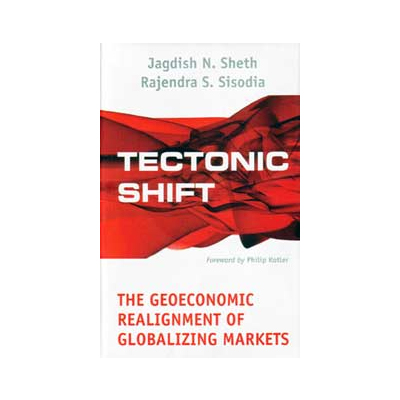Tectonic Shift: Book Review
About the author - Jagdish N. Sheth is a renowned scholar and world authority in the field of marketing. His insights on global competition, strategic thinking, consumer behavior, and relationship management are considered revolutionary.
Rajendra S. Sisodia is Professor of Marketing and the Founding Director of the Center for Marketing Technology at Bentley College, Waltham. An electrical engineer from BITS, Pilani, Dr. Sisodia has a Ph.D. in Marketing and Business Policy from Columbia University.
About the Book
Tectonic Shift represents a continuation of the journey started by Commanding Heights, Daniel Yergin and Joseph Stanislaw's masterful recounting of the economic history of the 20th century. The book offers a plausible scenario on how the global economy is likely to evolve in the first few decades of the 21st century. So, in short it looks at global economies in view of the emerging geopolitical forces.
The book focuses on the future of different nations of the globe taking into consideration their economic and political state. The political system of a nation directly influences its economic balance. Sheth and Sisodia have divided the world's developmental process into three basic growth engines - Western Europe in 1800s, United States in 1900s and Large Emerging Nations in the 21st century. Of all the countries in the world, United States has the highest economic output according to the World Bank.
According to the authors, `the surest and the farthest way to benefit the largest number of people is to create true synergy by speeding integration between advanced and less developed countries.'
The authors, take case studies from across Europe, America, Japan, South Korea, Africa, Australia, and India to discuss the challenges faced from a historical perspective. Taking a futuristic view they also attempt to put forth the threats of tomorrow. They believe that by 2025, most countries of the world would be loosely or tightly aligned by the three trade blocs which are America, Europe and Asia.
The chapter wise description of the book makes the process of learning extremely interesting. The first few chapters explain in detail the 'magic of Ricardo' (read David Ricardo's theory of comaprative advantage) showing how free trade will prove to be beneficial in the future. Later, the authors focus on what each trade bloc must do to make itself globally competitive providing an overview of the needed change against the challenges to be faced.








